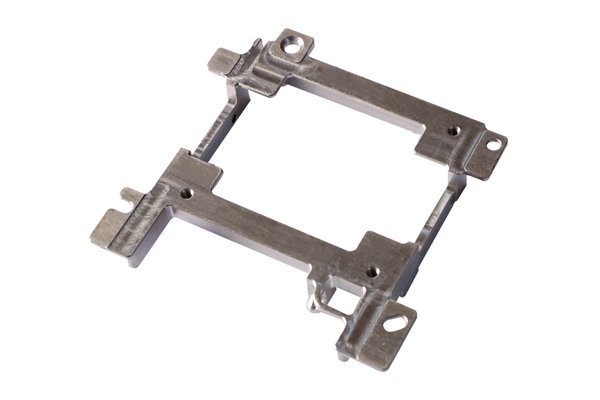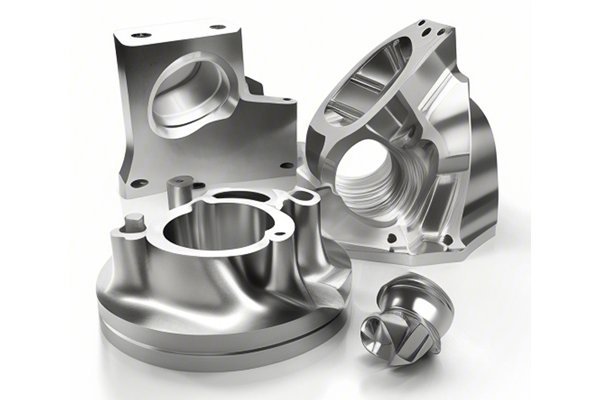In the world of modern manufacturing, the precision of CNC (Computer Numerical Control) machining plays a pivotal role in ensuring the quality, durability, and performance of end products. Did you know that 7075 aluminum, a high-strength alloy, is often considered among the most durable metals used in aerospace applications? In contrast, polycarbonate (PC) is recognized for its outstanding impact resistance and optical clarity. However, achieving optimal results when machining these two materials necessitates a keen understanding of their unique temperature processing requirements. Why does temperature control matter so much, and how do these differences impact the machining process?
The Importance of Temperature Control in CNC Machining
Before delving into the specific processing temperatures of 7075 aluminum and polycarbonate, it is essential to understand why temperature control is a critical factor in CNC machining.
Temperature affects the physical properties of materials. If machining occurs at inappropriate temperatures, it can lead to warping, reduced strength, or catastrophic failure of the part.
Heat generated during the cutting process can increase tool wear and necessitate more frequent tooling replacements. Managing temperature efficiently helps ensure that tools operate effectively and last longer.
A well-controlled temperature leads to improved surface finishes. In turn, this can diminish the need for extra finishing processes, saving time and money.
Excess heat can result in an increase in friction, which negatively impacts the chip removal process and may lead to clogging, both of which can result in poor machining outcomes.
Processing Temperature Requirements for 7075 Aluminum
7075 aluminum is known for its combination of strength, lightweight properties, and machinability. However, its processing must be finely tuned regarding temperature ranges for optimal outcomes.
Recommended Processing Temperature
Machining 7075 typically requires a temperature range of 70°F to 120°F (20°C to 49°C). When the temperature exceeds this optimal range, the alloy can become susceptible to thermal expansion, leading to inaccuracies in dimensional tolerances. The sensitivity to temperature changes is particularly elevated because zone heating can happen in thick sections of the material.
Ideal Machining Process
To achieve the effective machining of 7075 aluminum, vendors commonly adopt the following:
Challenges with High Temperatures
If the processing temperature exceeds 120°F (49°C), the material can experience softening, leading to compromised material strength. Moreover, in circumstances of extreme heat, there can also be a risk of creating burrs on the machined surface that require additional finishing processes.
Processing Temperature Requirements for Polycarbonate (PC)
Polycarbonate is a thermoplastic often used in applications that require transparency alongside impact resistance. Its temperature sensitivity calls for particular attention during CNC machining.
Recommended Processing Temperature
When it comes to cutting polycarbonate, the optimal processing temperature ranges between 60°F and 95°F (15°C to 35°C). A dramatic change in temperature can lead to deformation or melting of the material, which subsequently results in a subpar finish and compromised structural integrity.

Ideal Machining Process
To ensure effective machining of polycarbonate, the following strategies can be adopted:
Challenges with High Temperatures
Exceeding the recommended temperature for polycarbonate can lead to melting or warping of the material. This further complicates machining, potentially leading to material waste and increased manufacturing costs. Therefore, maintaining a consistently moderate temperature during the machining process is critically important.
Comparison of Machining Processes
General Considerations
Summary Table of Machining Properties
| Property | 7075 Aluminum | Polycarbonate |
|——————————–|—————————–|—————————–|
| Recommended Temperature | 70°F to 120°F (20°C to 49°C)| 60°F to 95°F (15°C to 35°C) |
| Preferred Tooling | High-speed steel or carbide | High-speed steel or carbide |
| Coolant Usage | Required | Minimal to none |
| Effects of Overheating | Softening, increased burrs | Melting, warping |
| Ideal Feed Rate | Medium to high | Low |
Understanding the processing temperature control for CNC machining of materials like 7075 aluminum and polycarbonate is pivotal in achieving optimized production. Different materials present unique challenges and advantages, and refining temperature management can significantly influence machining outcomes, including quality, efficiency, and operational costs.
By acknowledging and addressing the distinct thermal needs of these materials, manufacturers can fortify their production processes, ensuring that they produce high-quality components while minimizing wastage and increased operational costs. As technology continues to evolve, keeping informed about optimal machining strategies remains an invaluable asset for engineers and technicians alike.
In an increasingly competitive landscape, precision and adaptability are not merely options but necessities for success. It is essential for industry professionals to reflect on these insights as they pursue advancements in CNC machining technology and improve manufacturing efficiencies. The differences in processing temperature control serve as a reminder of the diverse challenges and solutions inherent in material machining, propelling the industry forward into new innovations and possibilities.
This extensive discussion encapsulates why it’s crucial to grasp the fundamentals of temperature control in CNC machining, which echoes the importance of continued learning and adaptation in the face of evolving manufacturing demands.






